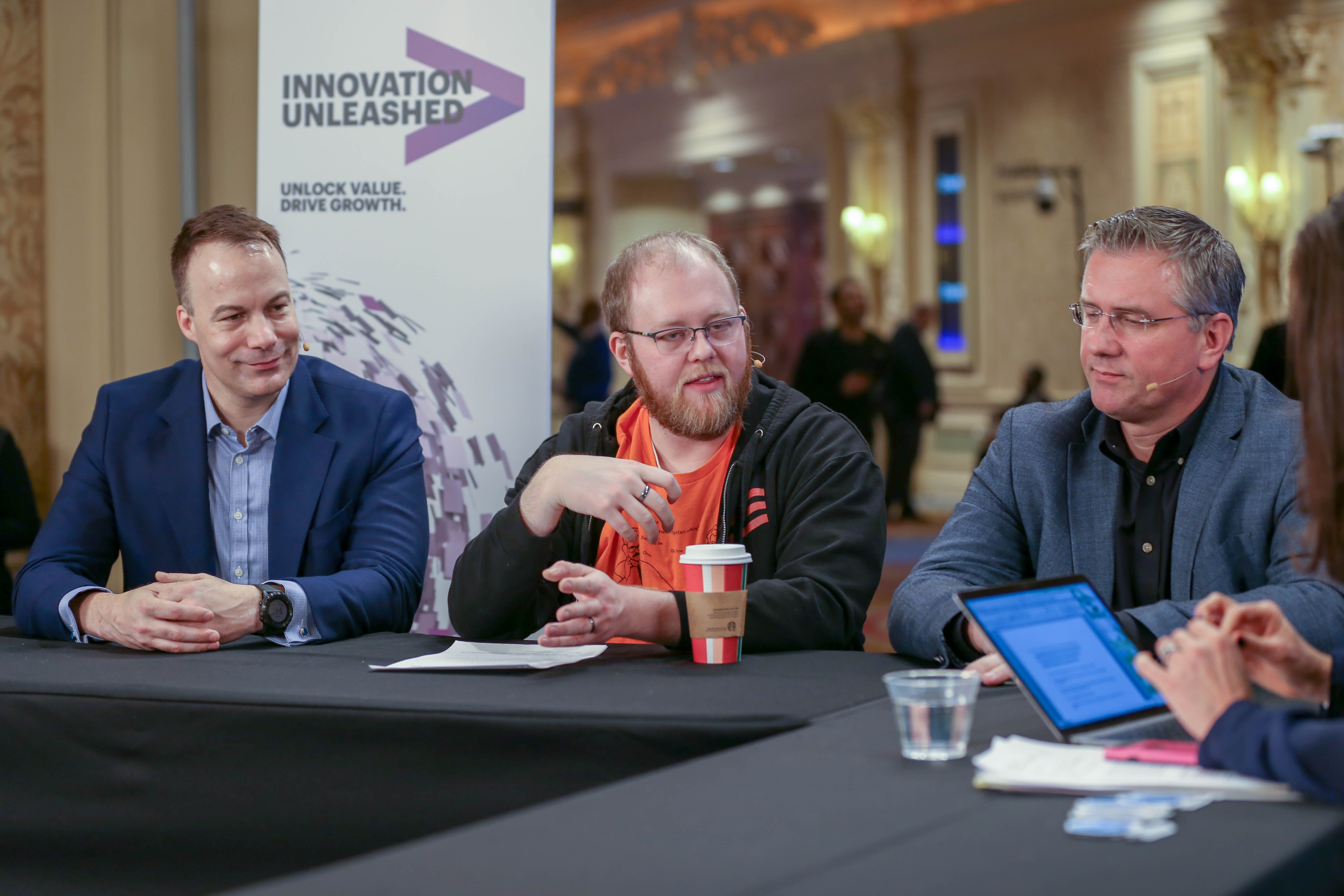 EMERGING TECH
EMERGING TECH
 EMERGING TECH
EMERGING TECH
 EMERGING TECH
EMERGING TECH
Think microservices are as granular as it gets in modern information technology? Then shake hands with the new reactive, event-driven architecture. This method triggers reactions where teeny-tiny events happen, instead of waiting for longer sequences to complete. It results in keener, quicker software applications and better customer experiences.
We see an architectural sea change every decade or so, according to Miha Kralj (pictured, left), managing director of cloud strategy, architecture and delivery at Accenture LLP. “Reactive event-driven style is just the one that is currently shaping to be the one that is going to replace the older architectural style called microservices,” he said.
How does it work?
“If you’re shopping [online] and you’re putting something in the cart, that’s an event,” said Matt Lancaster (pictured, center), managing director of Accenture technology at Accenture. Clicking on a new page is another event; checking out is one more. There are interstices between all of them where the system can react.
“If there’s a next best offer or a product marketing interstitial that needs to be put in, those things can be reacted to and composed much more simply than actually writing all the logic to put them in a big sequence,” Lancaster stated.
Kralj, Lancaster, and Merim Becirovic (pictured, right), global managing director of digital infrastructure, cloud and business operations at Accenture, spoke with Rebecca Knight (@knightrm), host of theCUBE, SiliconANGLE Media’s mobile livestreaming studio, during the AWS Executive Summit in Las Vegas. They discussed how event-driven architecture will help companies compete in the increasingly agile, software-first market. (* Disclosure below.)
“One of the most disappointing things to me in our industry is that most of the AI projects have boiled down to a [crappy] chat bot,” Lancaster said. “They can’t actually do anything.”
The problem is often that they don’t get the information they need in time to act on it.
Event-driven AI will democratize data and information throughout systems and streamline it to all interfaces at once, Lancaster explained. This will enable AI to act in real time for a better customer experience.
These architectures will place the AI layer front and center for IT professionals, according to Becirovic. “We’re going to be the managers of AI in the future. The AI’s going to run our infrastructure, and I think that’s the most fun part about this,” he stated.
All companies are becoming software companies — and those at the fore of the software-first wave already embrace the event-driven model. If companies stay stuck in traditional, command-and-control architectures, the market will punish them, Lancaster pointed out.
“I think in a lot of ways as an industry, we’re almost forced to move to this paradigm whether we like it or not,” he concluded.
Watch the complete video interview below, and be sure to check out more of SiliconANGLE’s and theCUBE’s coverage of the AWS Executive Summit. (* Disclosure: TheCUBE is a paid media partner for the AWS Executive Summit event. Neither Accenture LLP, the event sponsor, nor other sponsors have editorial control over content on theCUBE or SiliconANGLE.)
Support our mission to keep content open and free by engaging with theCUBE community. Join theCUBE’s Alumni Trust Network, where technology leaders connect, share intelligence and create opportunities.
Founded by tech visionaries John Furrier and Dave Vellante, SiliconANGLE Media has built a dynamic ecosystem of industry-leading digital media brands that reach 15+ million elite tech professionals. Our new proprietary theCUBE AI Video Cloud is breaking ground in audience interaction, leveraging theCUBEai.com neural network to help technology companies make data-driven decisions and stay at the forefront of industry conversations.